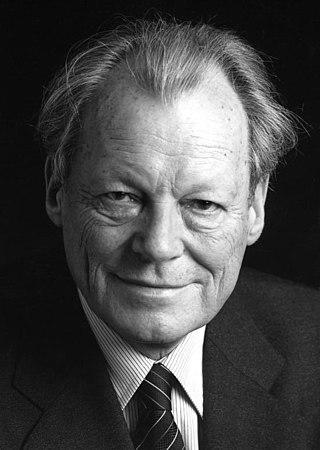Loading AI tools
الكهرباء الحيوية

انتقل رايش مع ليندينبيرغ إلى العاصمة النرويجية أوسلو خلال أكتوبر 1934 بعيد دعوة أستاذ علم نفس في جامعة أوسلو هارالد Schjelderup لرايش للحضور حول تحليل الشخصية وعلاج فيغو، وانتهى بهم الأمر المكوث في البلاد لخمسة سنوات.[1]
حاول رايش خلال الوقت الذي قضاه في النرويج إضفاء أساس بيولوجي على نظريته حول النشوة الجنسية واستكشف ما إذا كان المجاز الفرويدي حول libido في حقيقته كهرباء أو مادة كيميائية وهو حجة اقترحها فرويد نفسه خلال تسعينيات القرن التاسع عشر ولكنه تركها. جادل رايش لن يستطيع تفسير السبب وراء شعور البعض بالمتعة وغيرهم لم يشعروا حين فهم النشوة الجنسية لاشيء سوى توتر واسترخاء ميكانيكي . أراد معرفة العنصر الإضافي وجب وجوده لحصول الشعور في المتعة. , Reich attempted to ground his orgasm theory in biology, exploring whether Freud's metaphor of the libido was in fact electricity or a chemical substance, an argument Freud had proposed in the 1890s but had abandoned.[2] Reich argued that conceiving of the orgasm as nothing but mechanical tension and relaxation could not explain why some experience pleasure and others do not. He wanted to know what additional element had to be present for pleasure to be felt.[3]
Reich was influenced by the work of the Austrian internist Friedrich Kraus, who argued in his paper Allgemeine und Spezielle Pathologie der Person (1926) that the biosystem was a relay-like switch mechanism of electrical charge and discharge. Reich wrote in an essay, "Der Orgasmus als Elektro-physiologische Entladung" ("The Orgasm as an Electrophysiological Discharge", 1934), that the orgasm is just such a bioelectrical discharge and proposed his "orgasm formula": mechanical tension (filling of the organs with fluid; tumescence) → bioelectrical charge → bioelectrical discharge → mechanical relaxation (detumescence).[4]
أحضر رايش /أوسيلوغراف/ عام 1935 الحقه لأصدقاءه وطلابه الذين تطوعوا ليتلامسوا ويتبادلوا القبل مع بعضهم البعض بينما قرأ رايش التتبعات. كان فيلي برانت الشاب الذي سيغدو مستشارا لألمانيا مستقبلا من بين المتطوعين. كان برانت آنذاك متزوجا من سكرتيرة رايش جيرترود غاسلانت وعاشا في النرويج لتنظيم احتجاجات ضد النازيين. وأخذ رايش أيضا قياسات من مرضى مستشفى اضطرابات نفسية يقع على مقربة من أوسلو ومنها المرضى المصابين بالجامود وحصل على إذن رئيس المستشفى. In 1935 Reich bought an oscillograph and attached it to friends and students, who volunteered to touch and kiss each other while Reich read the tracings. One of the volunteers was a young Willy Brandt, the future chancellor of Germany. At the time, he was married to Reich's secretary, Gertrude Gaasland, and was living in Norway to organize protests against the Nazis. Reich also took measurements from the patients of a psychiatric hospital near Oslo, including catatonic patients, with the permission of the hospital's director.[5] Reich described the oscillograph experiments in 1937 in Experimentelle Ergebniße Über Die Elektrische Funktion von Sexualität und Angst (The Bioelectrical Investigation of Sexuality and Anxiety).[6]
مقالات برادي وإدارة الغذاء والدواء الأمريكية

حظي رايش بتغطية صحفية غير مميزة في غالب الأمر في الولايات المتحدة حتى عام 1947. أطلق رايش على الأورجون "إنشاء سِرياليّ" في دورية "الطب الجسدية النفسية"، ولكن نوقش عمله ضمن مجال التحليل النفسي في "دورية الرابطة الطبية الأمريكية" وفي "الدورية الأمريكية للطب النفسي"، منحت "ذا نيشين" كتاباته مراجعات إيجابية وأدرج اسمه على "رجال العلوم الأمريكيين."
Until 1947 Reich enjoyed a largely uncritical press in the United States. One journal, Psychosomatic Medicine, had called orgone a "surrealist creation," but his psychoanalytic work had been discussed in the Journal of the American Medical Association and the American Journal of Psychiatry, The Nation had given his writing positive reviews, and he was listed in American Men of Science.[7]
His reputation took a sudden downturn in April and May 1947, when articles by Mildred Edie Brady were published in Harper's and The New Republic, the latter entitled "The Strange Case of Wilhelm Reich," with the subhead, "The man who blames both neuroses and cancer on unsatisfactory sexual activities has been repudiated by only one scientific journal."[8] Brady's ultimate target was not Reich but psychoanalysis, which according to Turner she saw as akin to astrology.[9]
Of Reich she wrote: "Orgone, named after the sexual orgasm, is, according to Reich, a cosmic energy. It is, in fact, the cosmic energy. Reich has not only discovered it; he has seen it, demonstrated it and named a town – Orgonon, Maine – after it. Here he builds accumulators of it, which are rented out to patients, who presumably derive 'orgastic potency' from it."[8][note 1]
She claimed, falsely, that he had said the accumulators could cure not only impotence but cancer.[11] Brady argued that the "growing Reich cult" had to be dealt with.[12] On his copy of the New Republic article, Reich wrote "THE SMEAR." He issued a press release, but no one published it.[13]
In July 1947 Dr. J. J. Durrett, director of the Medical Advisory Division of the Federal Trade Commission, wrote to the Food and Drug Administration (FDA) asking them to investigate Reich's claims about the health benefits of orgone. The FDA assigned an investigator to the case, who learned that Reich had built 250 accumulators. The FDA concluded that they were dealing with a "fraud of the first magnitude." According to Sharaf, the FDA suspected a sexual racket of some kind; questions were asked about the women associated with orgonomy and "what was done with them."[14] From that point on, Reich's work came increasingly to the attention of the authorities.[15]
Wikiwand in your browser!
Seamless Wikipedia browsing. On steroids.
Every time you click a link to Wikipedia, Wiktionary or Wikiquote in your browser's search results, it will show the modern Wikiwand interface.
Wikiwand extension is a five stars, simple, with minimum permission required to keep your browsing private, safe and transparent.